by Elisa Zied | Jul 25, 2021 | books, fiction, graduate school, MFA, writer, writers, writing, young adult books
Full disclosure: Emma Kress is my dear friend. During our MFA studies, my Revisionary cohort at Vermont College of Fine Arts was lucky enough to adopt her (though we all respected the fact that we’d forever have to share her with the Tropebusters). Despite my obvious bias, this teacher and writer can only be described as a force, both as a human and a novelist. She has a lot to say and says it all with heart and hope and humor. Her powerful debut novel, Dangerous Play (Roaring Brook Press, August 3, 2021), more than proves that.
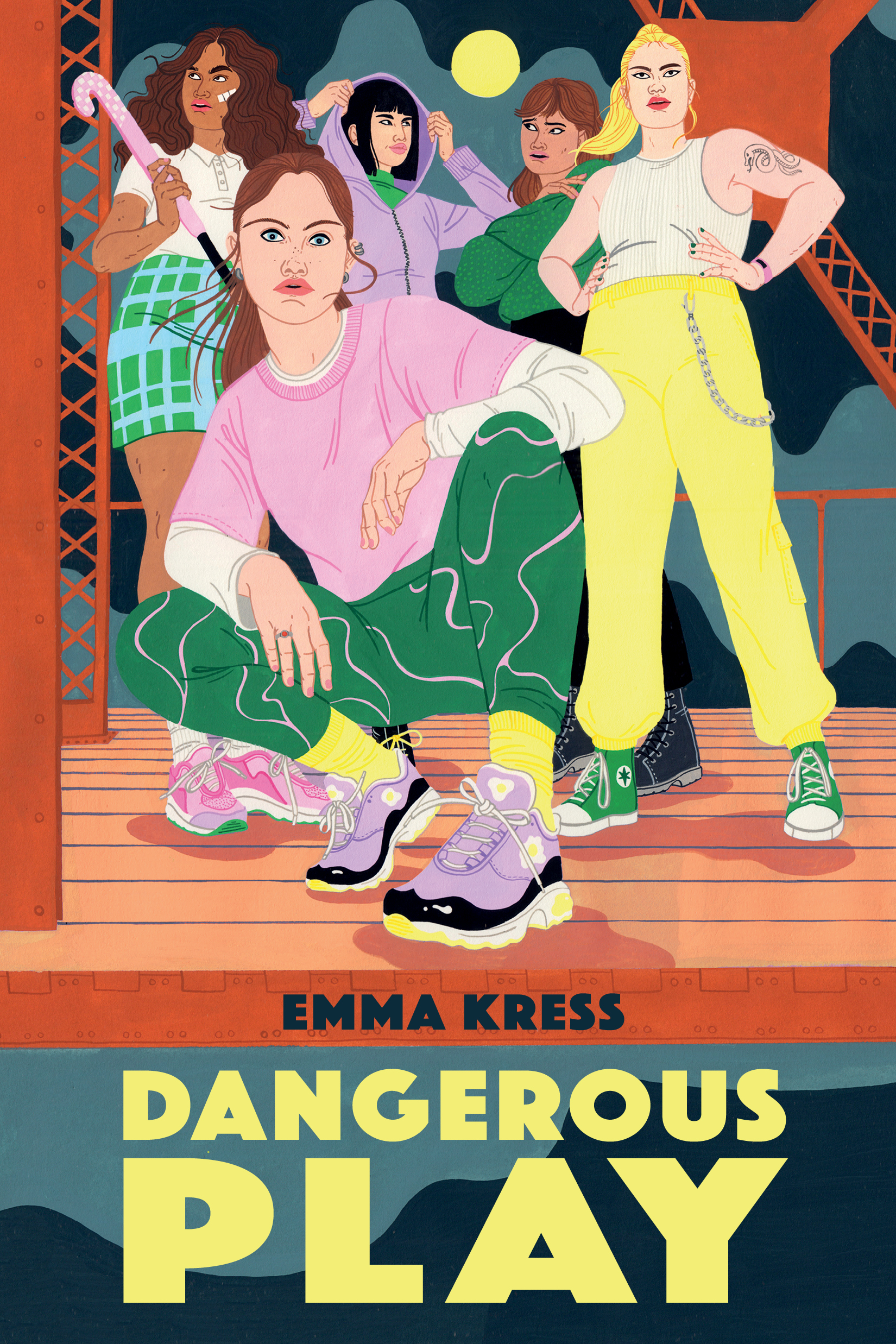 Described by Kirkus as “[A] contemporary feminist debut. . . . A timely and absorbing character study of a sexual assault survivor,” and by Corey Ann Haydu, author of Ever Cursed, as “Vibrant, daring, and deep, Dangerous Play is both a thrilling ride and a profound exploration of female friendship, rape culture, and the difficulty of doing the right thing in a world built on wrongs. An unflinching and empowering debut,” the novel is a timely, gripping and thought-provoking must-read for teens.
Described by Kirkus as “[A] contemporary feminist debut. . . . A timely and absorbing character study of a sexual assault survivor,” and by Corey Ann Haydu, author of Ever Cursed, as “Vibrant, daring, and deep, Dangerous Play is both a thrilling ride and a profound exploration of female friendship, rape culture, and the difficulty of doing the right thing in a world built on wrongs. An unflinching and empowering debut,” the novel is a timely, gripping and thought-provoking must-read for teens.
Here’s a brief description of the novel from Emma’s website:
Zoe Alamandar has one goal: win the State Field Hockey Championships and earn a scholarship that will get her the hell out of Central New York. She and her co-captain Ava Cervantes have assembled a fierce team of dedicated girls who will work hard and play by the rules.
But after Zoe is sexually assaulted at a party, she finds a new goal: make sure no girl feels unsafe again. Zoe and her teammates decide to stop playing by the rules and take justice into their own hands. Soon, their suburban town has a team of superheroes meting out punishments. But one night of vigilantism may cost Zoe her team, the championship, her scholarship, and her future.
I had the pleasure of doing an email Q and A with Emma about the novel and her writing life. Here are the highlights:
When did you know you were a writer, and at what point did you decide you’d write for children and young adults?
I’ve wanted to be a writer since I was ten but it took me until 2010 to take my writing seriously and commit to a daily practice. Writing for children and young adults was a natural choice as I was a teacher, surrounded by both children and children’s literature. At the start of my teaching career, I taught 5th grade and started a few middle-grade books. By the time I was writing seriously, I was teaching teens and reading a lot of YA fiction. But it was more than proximity, I think, that drew me to write for children and young adults. I think it was the same thing that drew me to teaching children and teens: our society underestimates kids, trivializes their concerns, and romanticizes their experience, all while exerting a lot of control over their existence. As a result, giving space on the page to teens and children is a radical act of resistance. And, most of my favorite stories center around change and power. I don’t think there’s any period of life that hits those more than childhood and adolescence.
What’s the greatest source of joy and fun for you when it comes to your writing life?
I love to learn and grow and writing offers a great path to both. I love figuring out the way the world or people work, though the eyes of my characters. I love the way a character can surprise me even though, technically, I’m the one doing the writing. I love the way at some point during the writing process I recognize some deep psychological struggle and get to say, “oh, that’s what you’re about.” Writing for me is like how running is for my husband—it keeps me steady, it keeps me sane. And, um, I don’t even need to sweat.

How has teaching fed into your creative life/process?
I think my love of teaching and the kids I’ve taught has been very helpful in terms of character voice and dialogue. I also feel very present in that time of life. I don’t have to rely on my memories as a teen when students are so ready to say, “you’ll never believe what just happened in the hall.” As a result, I think my stories feel authentic and of this moment. But I also think my commitment to honoring the voices and experiences of children and teens as a teacher is the same thing that drives me as a writer. As I said earlier, I think it is a radical act of resistance to listen to and honor children and teens.
How did getting your MFA at VCFA change your life (writing and otherwise)?
I could wax poetic about all that I love about VCFA for yeeears. VCFA gave me so many tools to improve my writing. As a result, I’m so much better at story structure, character development, side writing, and precision. But my time at VCFA was so much more for me than just a Home Depot for writing tools. VCFA emboldened me to experiment with new genres and audiences. VCFA fed my confidence and helped me pinpoint my strengths while shoring up my weaknesses. And I was actually shocked by the close-knit community. The alums I’d spoke to before I went all talked about it, but somehow, I didn’t think it would apply to me. Wow, I was wrong. It’s such a powerful network of talented and beautiful humans. I’d never been a part of an institution that was built on the twin pillars of compassion and creativity. As a teacher and former administrator, it was incredible to see that in action.
What are three tools you’ve used or created to help draft your novels?
My three biggest tools that I’m obsessed with right now:
- side writing
- working out problems with fat markers on big chart paper
- graph paper spreadsheets (not on the computer)
(For me, a big way to solve problems is often to step away from the manuscript and get off of the computer.)
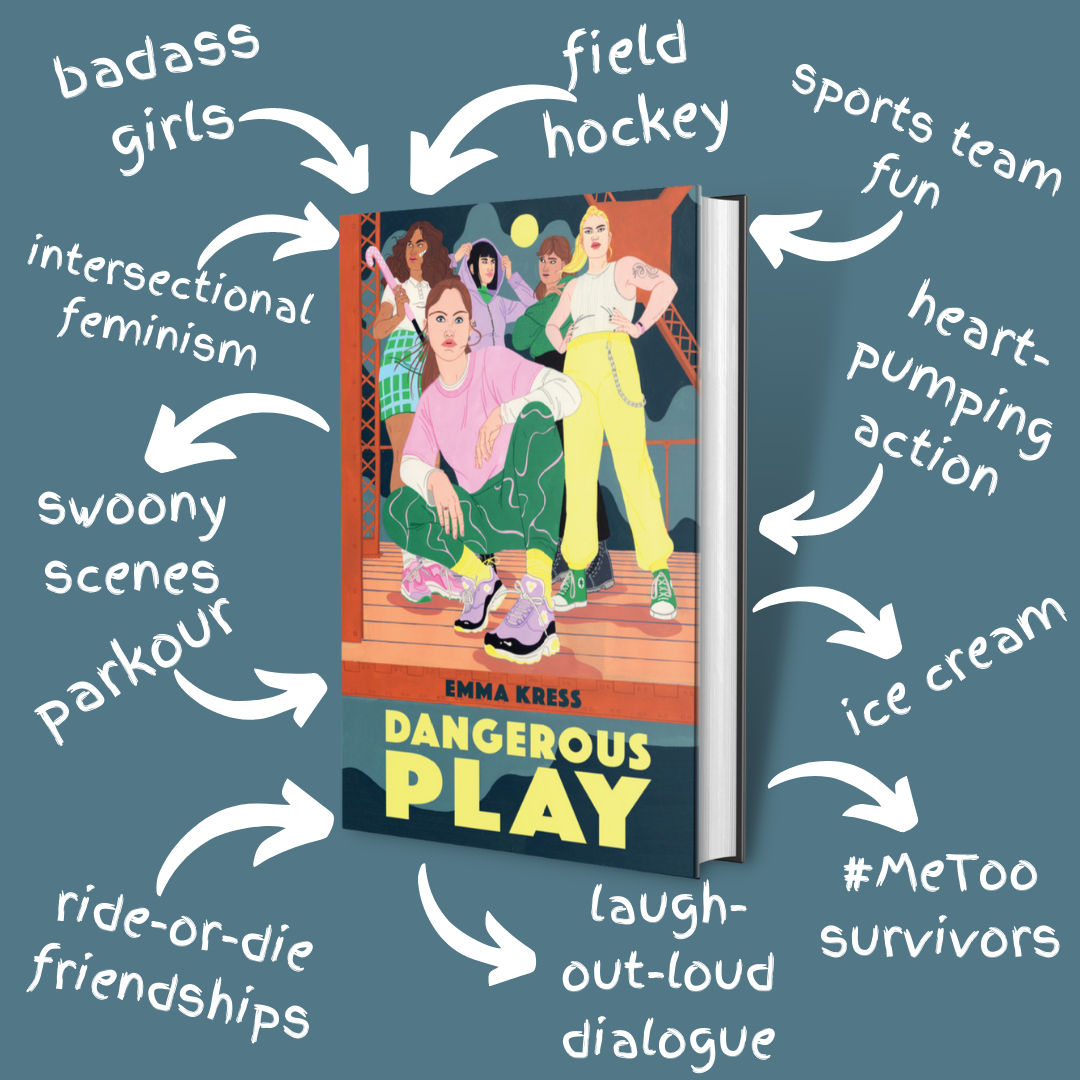 What was the spark that led to Dangerous Play, why was it important for you to write this particular story, and what did the process from spark to book look like?
What was the spark that led to Dangerous Play, why was it important for you to write this particular story, and what did the process from spark to book look like?
Dangerous Play is about the captain of a girls’ field hockey team. When she’s sexually assaulted, her ride-or-die team turn into vigilantes…but it might cost them everything.
This team of fierce, hyper-athletic, determined girls showed up when I was in the middle of writing something else. I told them to go away, but they didn’t listen. Even though they showed up sudden and loud, I had been thinking about some of book’s components for some time. For instance, I’d long noticed a gap in YA literature. While there were powerful books that followed a survivor’s journey, I didn’t see any books about rape culture overall. I’d also never seen a book about girls’ sports and the kinds of friendships that can happen on an intense, competitive girls’ team. I started writing Dangerous Play back in 2014. Thankfully, now there are books like Moxie, which address rape culture. And while there are more books featuring athletic girls (like 2021 debuts In the Same Boat, by Holly Green, and The Knockout, by Sajni Patel) there are few that feature full teams. As a result, I was thrilled when the girls of Dangerous Play showed up, filling a need I’d had for a long time. In many ways, this was the book I needed both when I was a teen, and as an adult.
Where do you like to write?
I used to like to write here, surrounded by books. And yet, thanks to the pandemic and everyone in my family in virtual school or working from home, I’m now squeezed in between my bed and the window on a folding table. But while it’s not as pretty, being able to shut my bedroom door is EVERYTHING.
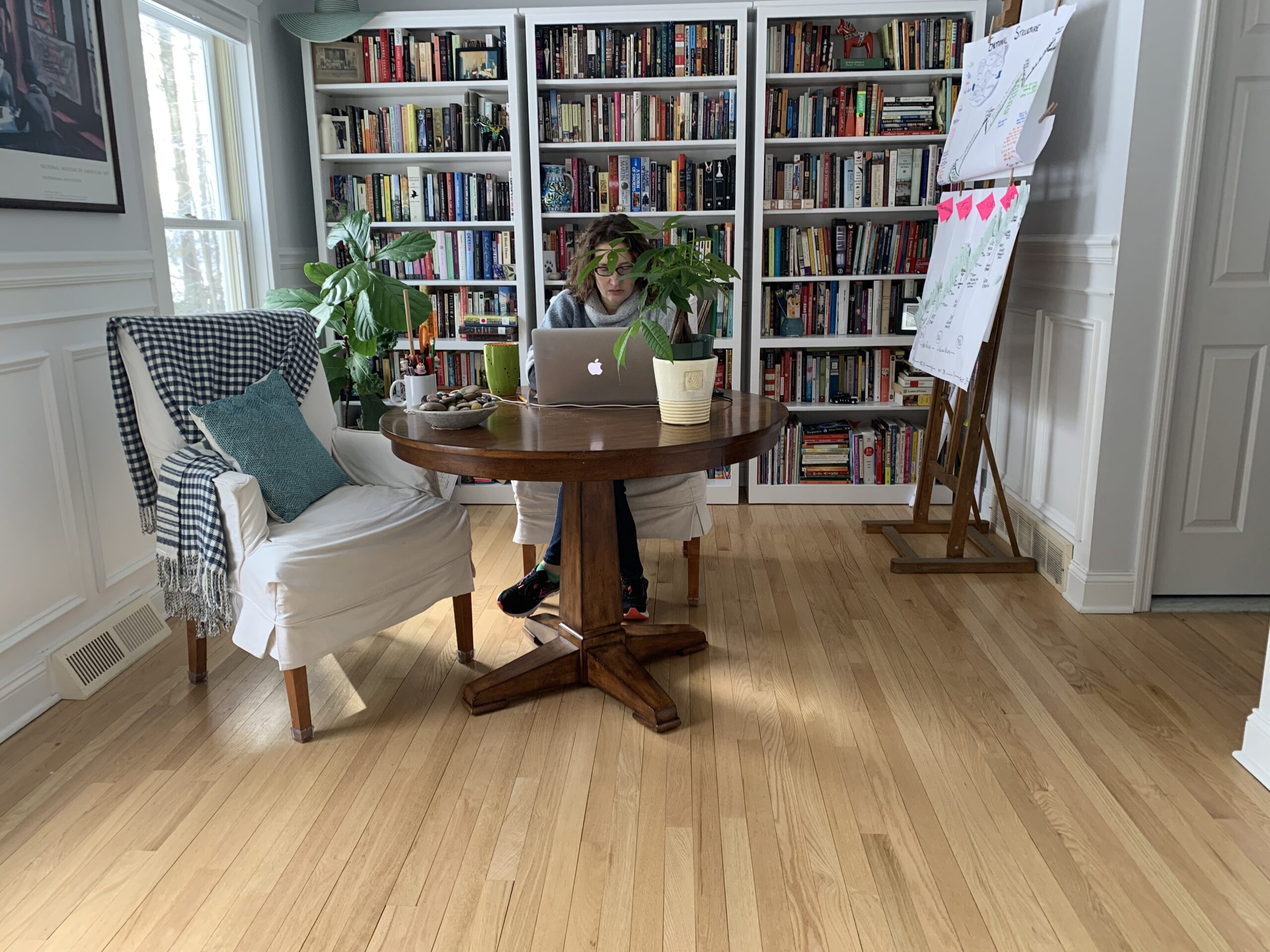

 What’s the best thing about transitioning from writer to debut author?
What’s the best thing about transitioning from writer to debut author?
EK: I’ve been thinking a lot about that old version of me—that 10-year-old girl—who wanted more than anything to be a published author. It’s a surreal and incredible thing to be able to give her this gift. How many people get to do that? It feels like a true privilege. And I think the gift feels all the bigger because of how long it took for me.
What’s the most challenging thing about transitioning from writer to debut author?
Every day I’m learning something new. Which in many ways is wonderful, because luckily I like to learn new things. But the learning curve is steep. It’s a bit daunting and tiring to be standing at the foot of yet another learning mountain on a near daily basis. Part of that is the debut year. But part of that is debuting in a pandemic. So even if I ask my mentors who are more experienced for advice or insight, none of them debuted in a pandemic so it makes things a bit more interesting for us pandemic debuters. Thankfully the kidlit community is the most inclusive and supportive of which I’ve ever been a part—so we’re weathering this together.
Please share any advice that’s helped you best (from others or yourself) in your kidlit career?
I think A LOT about my boat and I recommend every writer get themselves a boat. Inside my boat are the things I can control: honing my writing craft, how much I dedicate to my writing, how vulnerable I am on the page, getting the words on the page, teaching my kids to clap when I finish a draft. Literally everything else is outside my boat: book deals, reviews, lists, other people’s opinions, whether my kids actually clap, etc. It’s so helpful to train your focus inside your boat. In publishing, there are a lot of shiny somethings, lots of ego catnip, lots of opportunities to, as one writer friend likes to say, “compare and despair.” Retraining our focus to be inside our boat must be a habitual and intentional act. Let craft and our enjoyment of it be our unwavering center.
Hope Sparkers–what are they, and where can people get some?
I love that you asked! As you know, I’ve done a lot of research on hope and how helpful it can be for writers for children and young adults to incorporate hope as part of their writer’s toolkit. I made up the term “Hope Sparkler” to refer to all the things that I believe give us hope: friends/family/inspirational leaders in your community; religion/ philosophy/ belief system/ faith in ruling bodies; your own positive characteristics (creativity, humor, optimism, gratitude etc.); passion/talents (baking, gardening); place; and, of course, books. Books not only can contain hope sparklers but they can be them in their own right. If there’s anything we learned during this last year, it’s that we need as many hope sparklers as we can get. We need them to light our way during those dark days. And children need them most of all.
Where can writers and educators access your awesome Instagram videos for use in their practice or classroom?
Oh my gosh, these videos have been such a gift to me as well. Every single writer I’ve interviewed has offered such wisdom and inspiration. With the exception of one long-form video, all videos are about 15-minutes and packed with craft. At this point, there are thirty-six videos and you can find them all on my IGTV. I plan to offer these again during this year’s NaNoWriMo. I love any opportunity to blend my love of teaching and writing!
What’s on the horizon for Emma Kress?
I’m busy revising what I hope will be my second book—also a contemporary stand-alone YA. Like Dangerous Play, you can expect it to be feminist, funny, and fierce. On August 3rd, I’ll have a virtual launch with the great Nova Ren Suma along with several other upcoming launch events and writing workshops. I offer one general and one writing-focused newsletter every month (sign up here: https://www.emmakress.com/contact ). I’m also very active on all my social media. I look forward to connecting with all of you.
Some other mentions of Emma Kress and Dangerous Play to check out: A review on Publishers Weekly, a craft lesson on writing about sports on Kid Lit Craft.
Emma Kress is a long-time educator and 2014 finalist for NY State Teacher of the Year. She’s a graduate of Vassar College, Columbia University’s Teachers College, and the MFA program in Writing for Children and Young Adults at Vermont College of Fine Arts. She lives with her family in Saratoga Springs, NY. Dangerous Play is her debut novel. Learn more about Emma Kress and her amazing work on her website and on Instagram, Twitter, Facebook and TikTok.
by Elisa Zied | Jun 5, 2021 | books, fiction, VCFA, writer
I recently read Liara Tamani’s All the Things We Never Knew (Greenwillow Books/HarperCollins Publishers)—a 2020 Kirkus Best YA Book of the Year that’s now out in paperback—and I couldn’t put it down. I laughed, cried, and swooned over the romantic, immersive, and layered story—a perfect YA novel. Here’s a brief description of the title from Tamani’s website:
The Sun is Also a Star meets “Love & Basketball” in a tumultuous, lyrical teen romance about two African American, high school basketball stars who fall in love hard and fast, but struggle while navigating their own tough family issues.
Carli feels completely lost. She secretly wants to quit basketball, but has no idea what dream she wants to replace it with. To make matters worse, her parents are getting divorced and she and her brother must decide who to live with. The only thing saving her is her belief that signs will ultimately reveal her destiny, and they all just pointed to Rex.
Rex craves love. He might be ESPN’s #1 high school basketball player of the year, but he’s terribly lonely. An only child, his mother died giving birth to him and he’s sure his father blames him for it. Plus, Rex has moved to a new school where all of his new teammates hate him. But meeting Carli changes everything. With her, he feels all the love he’s ever wanted to feel.
Set in Houston over the last few months of Rex and Carli’s junior year, ALL THE THINGS WE NEVER KNEW will make readers feel the all tenderness, messiness, and bliss of first love.
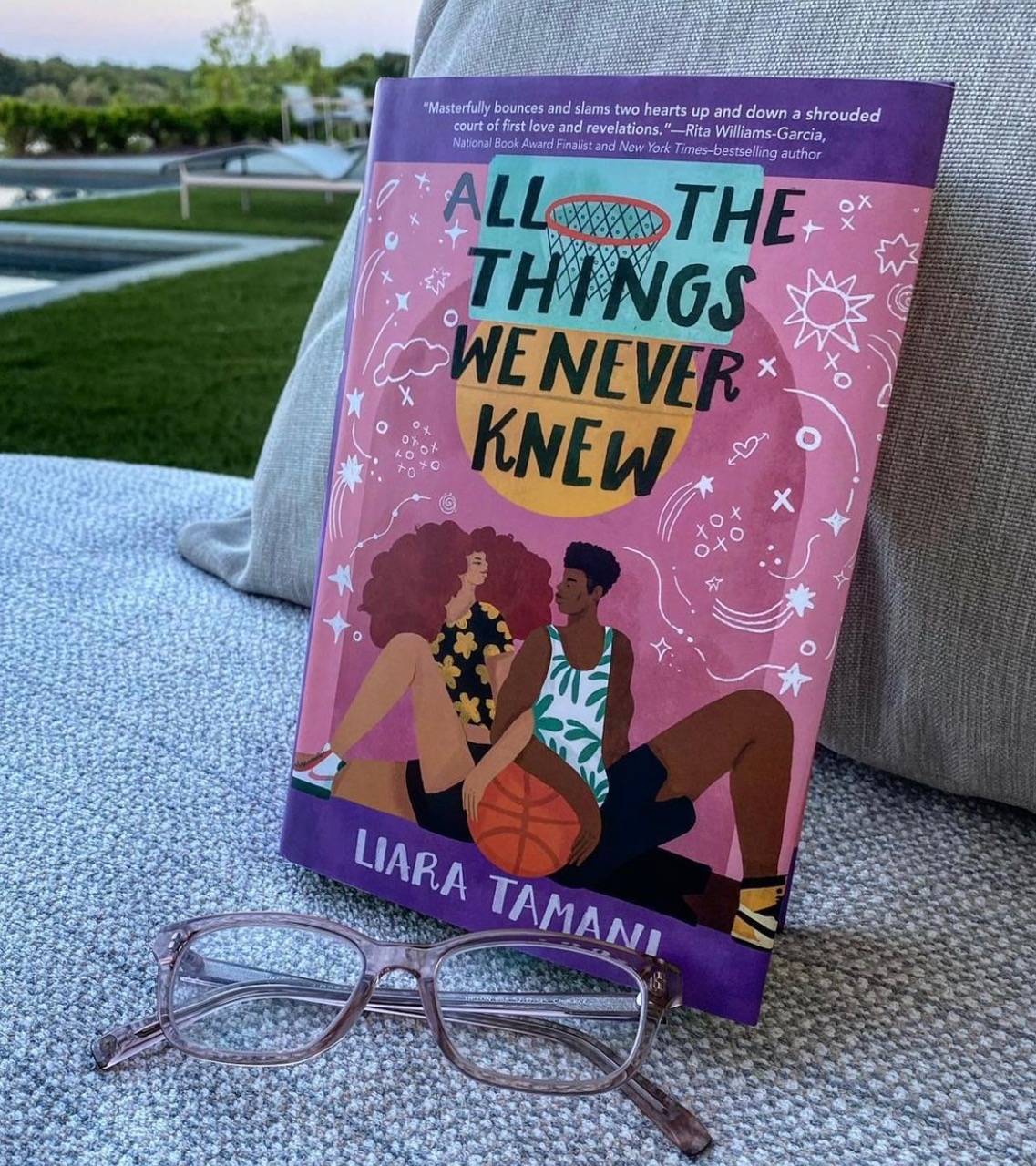
Cover art by Loveis Wise.
Before diving into Tamani’s gorgeous first novel, Calling My Name (Greenwillow Books/HarperCollins Publishers)—a 2018 PEN America Literary Award Finalist and an SCBWI Golden Kite Award Finalist—I had the pleasure of chatting with Tamani about her work and writing life. Here are the highlights:
EZ: We share something in common—we’re both graduates of Vermont College of Fine Arts. You received your MFA in Writing from VCFA in 2010. How was that experience for you?
LT: I loved the sense of community and still have good writing friends from the program. I loved getting different feedback every semester from different advisors. Each gave you something new to look at, and every semester a fresh set of eyes saw your work. Each advisor’s feedback resonated with me in different ways.
EZ: When did you first consider yourself a writer?
LT: I think all writers go through this thing where they’re afraid to call themselves a writer until they’re published. I’m sure it’s an insecurity many writers wish they could rid themselves of, and I definitely had it. I don’t know if I would have called myself a writer until I got a short story published. I had been writing for many years, and had definitely earned the title. But I didn’t want to say I’m a writer and then have to answer the inevitable question, Where have you been published? The fear in me never wanted to answer, Nowhere, to that question.
EZ: What inspired you to write specifically for children and young adults?
LT: Initially I didn’t have a specific plan for writing for children and young adults. At Vermont College of Fine Arts, I wasn’t even aware of the Writing for Children and Young Adults program. I did the adult program. I was also ignorant and naïve about all aspects of business and marketing, and where books fit in the market. When I was writing my first book, Calling My Name, I was just trying to write the best book that I could.
The girl who narrated the story had a young voice. So, during the first round of submissions, my agent pitched it as young adult. The plan for the second round was to pitch it as an adult novel. It ended up selling really quickly and then I got a two-book deal with the expectation that my second book would be written for the young adult market.
But I will say it’s been a huge blessing, and I’m so grateful that I get to write for kids. I always try to see the beauty in the world all day, every day, and to be aware of living a life in loving kindness. I try to do all of these things, and I love learning about the human experience because we are constantly evolving and growing. Just because we are adults, the learning never stops. Even when you learn things, you have to relearn them. Our learning takes place in a cyclical manner, just like everything else in life. We learn things and then we forget things, and then we learn them again. Writing for kids helps me remember.
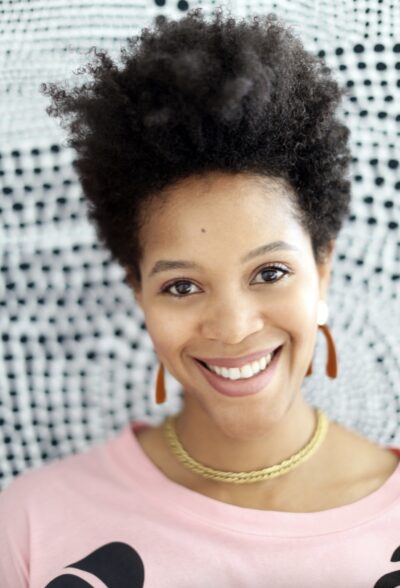
Photo credit: Seneca Shahara Brand Photography
EZ: It’s kind of like revisions. We rewrite something, looking at one thing, then we rewrite again looking at something else. We can’t make all the changes, or tackle everything all at once.
LT: We have these daily experiences where we’re living in the minutia of it all, and sometimes we forget some of the larger guiding principles. Sometimes we forget all the things we’ve learned along the way. I always have to remind myself of things I’ve learned but forgotten.
EZ: How did your writing process differ between the first two novels? Did you write each of them very differently?
LT: The process of writing both books was very different. I’m not sure I could write any books in the same way. For Calling My Name, because it’s based on my childhood—it flowed for me very easily. I wrote short chapters and vignettes completely out of order and did so by accessing and creating fiction around things that had made an impression on me growing up. At first, I didn’t know it was going to be a book. I’d probably written twelve to fifteen chapters that could stand on their own. But when I found the voice, I was like, oh—I love this. I loved her so much and kept writing more and more.
EZ: I understand you’ll have a third and fourth novel come out. Congratulations on that! Where are you in that process, and how are you approaching them?
LT: Every time I write a book I feel like I don’t know how to write a book. For me, the hardest thing about writing a book is coming up with what I’m going to write about. I didn’t have that problem with Calling My Name because I didn’t even know it was going to be a book at first. It was very organic the way the pieces came together for that. For my next book I wanted to write something that was meaningful and I had to fall in love with the idea of the book before I started writing it. So, my process was filling up many notebooks with ideas. I get excited about an idea and then I start to write about it, and then I’m like, no that’s not it.
I wrote my second book, All the Things We Never Knew, so differently than my first. I wrote it chronologically and used a short outline (a one-page guide) to let me know where I was going. For my first book, I had zero outline and wrote out of order. The third book, the one I’m working on now, is the hardest. Maybe because of Covid, but it has been very hard for me to find my way inside the characters.
Even in All the Things We Never Knew, I was able to easily embody my characters. That’s what it takes for me to get going. Then I let them lead me–it’s their story. With the story I’m currently working on, I couldn’t get inside the main character for a long, long time. I find that the interaction with the world is necessary for me to write. My brain had been slow and sluggish and I was writing and writing, feeling like it was all going to waste. I kept writing about her, writing in different voices. I was trying to write her in every way I could, trying to find my way inside. Eventually I did—it just took me a long time. And now that I’m there I see that all the writing I did wasn’t wasted. I realize that I was figuring things out even when I didn’t know it. We struggle and struggle, and when we’re struggling we can’t often see the fruits of our labor–they’re invisible. We just feel the pain of the struggle. But afterwards, we can see there was fruit that came from that struggle, and I’m grateful for it.
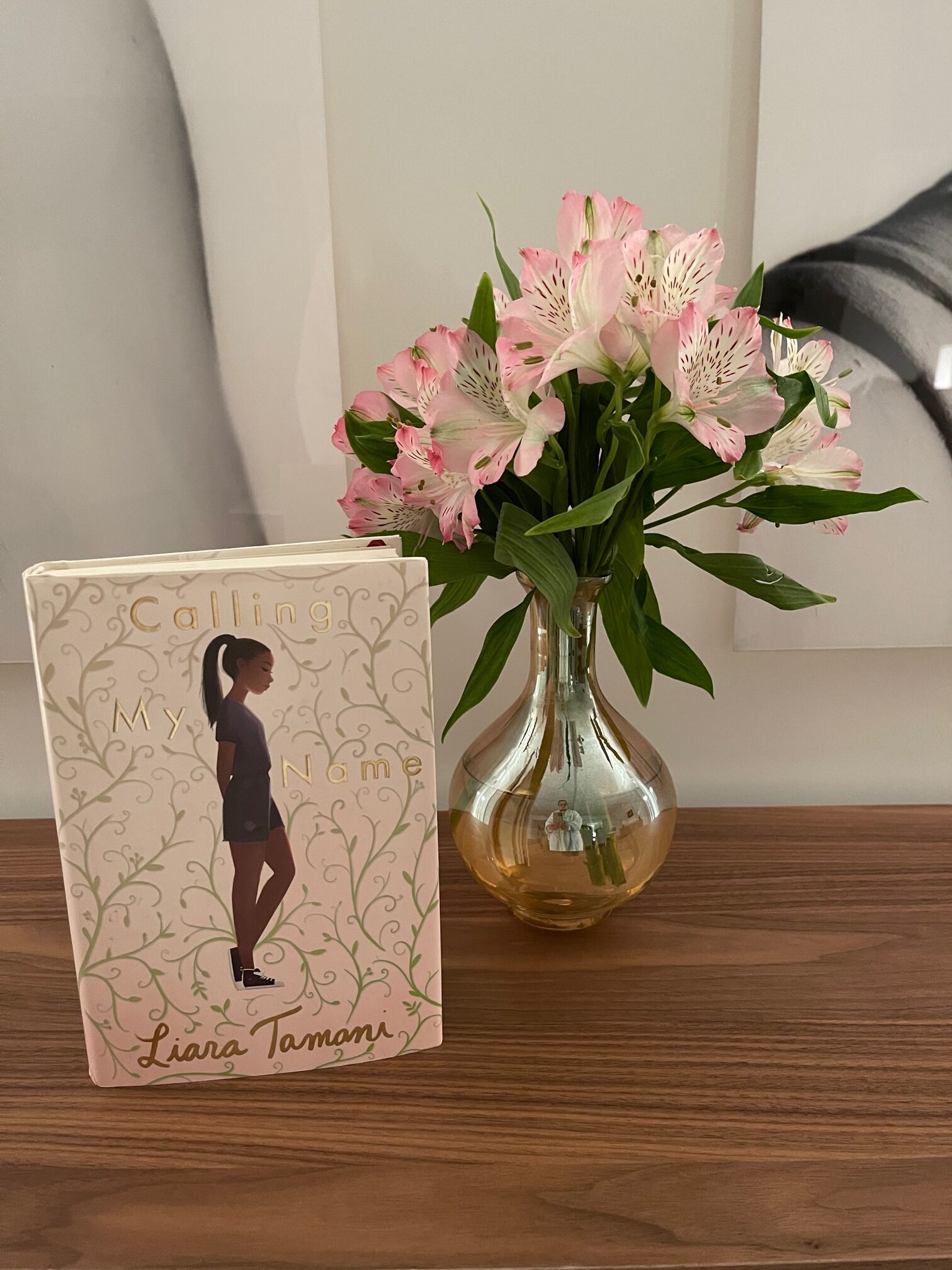
Cover art by Vashti Harrison.
EZ: I love that. And I love how you said that nothing’s wasted. So many times, when you look back at your writing, you find a nugget of something that helps you figure something out. Or you use the nugget in some other way. Or you realize it led you to answers or to a voice or to something that gives you satisfaction or helps you feel like you’re making connections that you can then put on the page. I think that’s a good message for all writers, that nothing is wasted. Even if you cut something, it’s not wasted because you needed to go there to get to where you’re going. We’re all emotional, we all have feelings about our writing that sometimes get in the way, but we have to know that’s part of the process. And part of the beauty of it is finding your way through and realizing the struggle was leading you where you needed to go. You mentioned the pandemic—something you said that resonates with me is not being in the world and how that has affected our ideas and our ability to write and inhabit characters. So much of life is being out in the world, observing, being in nature—and with other people. Socializing, eavesdropping, listening and conversing–it’s all been so different. Have you found the light in that, or has it all just been very difficult, or both?
LT: After having that power outage [in Texas] and now that we are getting back out in the world, things are blooming and it’s spring and I’m feeling that energy—I’ve never felt spring so hard, things coming back to life and growing. I feel that growth in myself, and of course it’s all happening in conjunction with the world slowly opening up, and with people getting vaccinated. I feel that energy of people coming together. We’re all growing together. I definitely see the light, and I’m seeing it more and more. I’m grateful for that.
EZ: What are some things you need to have you when you write? Do you listen to music? Do you need silence? Is it different when you’re drafting versus revising? What helps you write your best and be productive?
LT: I’m not a writer who does a lot of drafting. I write line by line, and when I finish a book it’s mostly done. Of course, there are different things you need to go back and change, but I write line by line and revise as I go. I realize it’s less efficient, but it’s how I write. I love language and the rhythm of words and how they’re put together. I love the sound of writing and love it too much to neglect it at all. I have to love the way something sounds before moving on. I typically go back and read what I write every day to make sure that it all flows together. But what I need is silence. I have a young daughter, but I need to be by myself to write.
EZ: What would you consider the highs and the challenges of being a published author?
LT: Life after publishing becomes more complicated. It’s not just about the craft or about writing the most beautiful story you want—I still do that in terms of my work, don’t get me wrong. I’ll never sacrifice the work I do to try to write the most popular book. I have to write words I love and the stories I believe in. However, once you’re in the market, you do need to be concerned with marketing your work. A lot of the onus is on authors, especially if you don’t have a lead/chosen title where the publisher puts a lot of money behind your book. The money behind those books subsidizes other titles. The money is not spread out evenly. So, the vast majority of writers have to do their own marketing. That’s something I’ve found very difficult—just being out there selling yourself. I’m not good at that. It’s taken me awhile, but I’m working on getting a system down that’s intentional—where I’m offering something to my readers. It’s taken me three years and two books, and I still haven’t figured it out. But I’m excited to design a system moving forward that will work for me. Still, I prefer communicating with people in person—it feels more real.
EZ: A lot of times, interactions on social media feel transactional. You can have genuine relationships, but when you start promoting and marketing your work, it’s definitely a challenge. I’m like you and don’t really like selling myself or my work. But I love the way you present yourself in social media. Still, it’s a challenge to have genuine connections online.
LT: It’s a business where you’re helping people learn about books, but then you’re promoting your book and helping everyone promote their books. It’s a lot to bear. My mental health has taken a beating with social media, and I’ve had to step back. If I then sell fewer books, so be it. Sometimes I think about abandoning social media altogether. At the end of the day, writing the most books is going to be the most fulfilling. Not posting the most.
EZ: Social media can be dispiriting and taxing, and you do need to protect yourself and allow yourself to be in a certain headspace as a writer. Speaking of writers, who are the authors or books that have most influenced or inspired you or your writing?
LT: There are so many because I’m such a book lover. Toni Morrison is one of the big reasons I write. I read so many of her books when I was young. Entering the young adult space, I’m very inspired by the work of Renee Watson and Jason Reynolds. Also, Nicola Yoon’s books are beautiful and sweet but still manage to get teens to ask themselves the big questions.
EZ: If you could offer one piece of advice to writers—or share something that’s helped you—what would it be?
LT: Keep writing. Everyone has a story to tell. Only you can tell yours.
To learn more about Liara Tamani and her work (which includes being featured in the Black Enough anthology), visit her website. She has also been featured on NPR, and wrote this great piece for TIME.
by Elisa Zied | Jun 2, 2021 | books, writer, writers
If you tend toward perfectionism (like me), the following guest post, written by debut novelist and Instagram story star* Emma Kress, is a MUST READ. I saw the post in #SQUADGOALS, Kress’s awesome monthly newsletter, and thought it had so many nuggets to help us acknowledge and tame our inner (and outer) perfectionist. It’s too good not to share.
Stubborn Starfish
Let’s talk about perfectionism. Perfectionism isn’t the wink-wink negative trait we used to woo employers back when we first applied for jobs. Perfectionism isn’t an oh-so-cute strength masquerading as a flaw. Nope. It’s an honest-to-goodness evil within that we must hunt and kill on the regular.
I know, I know. I sound dramatic. But perfectionism IS dramatic. Certainly, the voice in my head gets awfully dramatic when it’s yelling at me that I’m not good enough. And, more important, the consequences of that voice can be deeply dramatic.
This recent editorial from the NY Times never names perfectionism but it does talk about America’s obsession with an unhealthy work ethic—one that’s maybe killing us. And I think maybe perfectionism is at the heart of that.
Perfectionism has two modes: work-to-the-bone or duck-and-cover.
Neither are good playmates with creativity.
Perfectionism isn’t something I’ve been able to chop off and leave behind like a good haircut. (I just got my first post-Covid haircut. The relief!) No. Perfectionism is a third limb that I hack away but it keeps growing back like a stubborn starfish. Stupid starfish.
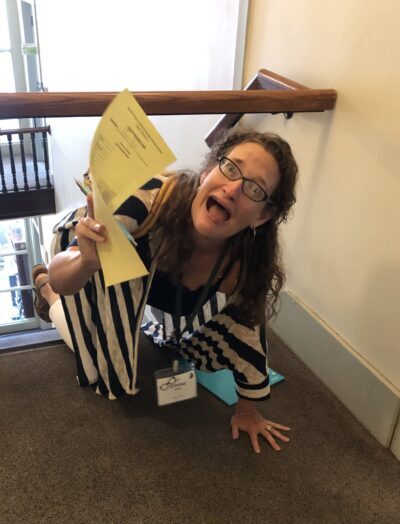
Emma making use of tip #5–Keep Going–as below. Moments before this photo was taken, Emma climbed many, many steps.
And lately, my perfectionism has been manifesting in duck-and-cover paralysis. What do I do when this happens?
1. Name it. “Oh, hey,” I say. “You again.” Now that I know perfectionism has a hold of the megaphone inside my head, well, it’s easier to dismiss. Because perfectionism is a liar.
2. Be self-compassionate. I take a daily routine—showering, toothbrushing, doing dishes—and the whole time I’m doing that routine I heap niceness on myself: Look at you! Washing dishes in a pandemic! You’re a downright superhero! (Revisit my last newsletter for saying nice things in the voice of your BFF.)
3. Step away. Rest. Read. Write silly things that don’t have a deadline or pressure attached. Garden. Make something. Get creative in a way that is all about being messy and imperfect—finger-paint with a toddler. If perfectionism tells you you’re not good enough so you better work yourself into sickness, well, show it you know how to rest. Get some work-life balance going.
4. Focus. The perfectionist paralysis for me often comes when I’m overwhelmed by All The Things I want this work to be and do. So focus. Allow yourself to be perfectionistic about one thing only. With writing that means I’ll focus on dialogue or setting or a minor character. Zero in.
5. Keep going. If perfectionism is all about telling you you’re not good enough so you might as well quit, well, keep going. Even if you’ve got no bounce in your step, your steps are still steps.
6. Virgo it up. I have no scientific basis for this but I’m pretty sure every Virgo is a perfectionist. While I can’t help that, I can use my love of schedules and routines to help fight perfectionism. Schedule the rest, physical exercise, playful writing, focus, and self-compassion.
7. Lean into the joy. What do you love about your work? Do that. Do that like your life depends upon it.
The people I love the most are the messiest. Perfectionism is a lie. Messy is authentic. So snatch that megaphone back from your inner perfectionist, and hand it to your inner BFF. You’ve got this.
You can preorder Emma Kress’s debut YA, Dangerous Play (Macmillan/Roaring Brook Press, August 3, 2021), here, and subscribe to her monthly newsletter about writing, books, and so much more by visiting her website.
*Check out Emma’s recent interview with the equally awesome A.S. King about her latest YA novel, Switch, writing, emotions, and life, right here.
by Elisa Zied | May 18, 2021 | books, fiction, VCFA, writer, writing, young adult books
Words Composed of Sea and Sky (Running Press Kids/Hachette, 5/25/21) by debut YA novelist Erica George had me at the gorgeous title, and stunning cover in hues of yellow and blue. But the novel itself more than lived up to my every expectation. George’s beautiful poetry and prose, the dual timelines, the evocative setting (Cape Cod), and the engaging and interwoven stories of two poets—Michaela Dunn and Leta Townsend—told in the current day and in the 1800s, respectively, make this a strong and worthwhile read. And if you’re a fan of layered characters and some swoon, this one’s for you.
I had the pleasure of doing a Q and A with George. Full disclosure: we first met when we shared a workshop at Vermont College of Fine Arts. I knew then of George’s talent and am thrilled for her debut and to share more about her novel and writing life.
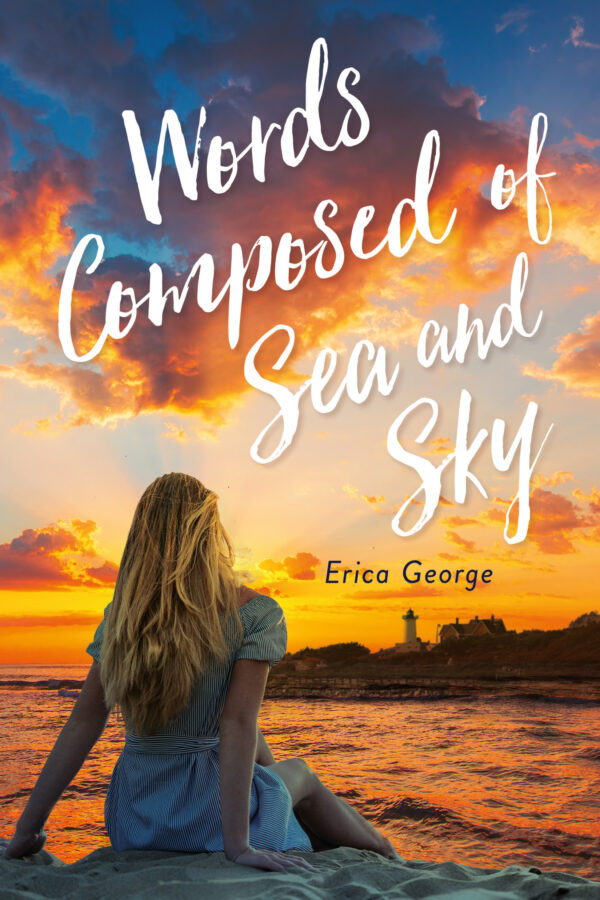 EZ: Was there a moment in time you discovered you were a writer, or was it something you’ve always done without thinking much about it?
EZ: Was there a moment in time you discovered you were a writer, or was it something you’ve always done without thinking much about it?
EG: Writing is something I’ve always done. There has never been a point in my life where I haven’t written (unless I wasn’t physically capable yet!), and there has never been a moment where I didn’t know that I was going to be an author.
EZ: What lured you to write fiction for children and young adults?
EG: I definitely think that being a teacher has made me gravitate toward writing for young people. I remember being a kid and trying to enjoy the books that were assigned to me in school, but also desperately wanting books that spoke to me (and were more interesting, let’s be honest!). Writing for young people is an honor I work hard to live up to.
EZ: How has your creative writing fit into your teaching life, and how has teaching/working with students informed your writing?
EG: They’re absolutely intertwined. I value student choice in reading and writing (as often as I can) in my classroom, so we’re always discussing what we’re reading or which author has a new book coming out. If I’m being honest, I would really have to think about the last adult book that I’ve read! There’s always a middle grade or young adult novel on my nightstand or in my bag.
EZ: You’re a candidate for an MFA at Vermont College of Fine Arts in the Writing for Children and Young Adults. What were your motivations for wanting to study at VCFA and how has the experience impacted your writing and career?
EG: Two of my critique partners actually have their MFAs from VCFA in Writing for Children and Young Adults, and they couldn’t say enough about the program. After doing my research, I knew that I wanted a degree that would not only benefit my writing career, but also instruct my teaching. There are so many topics we discuss at VCFA during workshops and seminars that I always jot down so that I remember to bring it up in a lesson or in conversation with my students.
EZ: What was the spark for, and trajectory of, your debut young adult novel, Words Composed of Sea and Sky?
EG: I think the initial spark began when I was thirteen (let’s not discuss how long ago that was!). I started writing about one of the characters in Words Composed of Sea and Sky, Captain Benjamin Churchill, when I was in middle school, and he hasn’t left me since then. He’s weaved his way in and out of books, trying to find which story belongs to him, and it didn’t all come together until the summer of 2018 when I decided I wanted to write a book about two female poets from two separate centuries, and suddenly he just belonged. He had an effect on both of my main characters (for better or for worse!)
EZ: What have been the best parts of being a debut author so far (being a 21der etc.), and what’s next for you?
EG: Being a part of the debut process with my fellow 21ders has been a dream. I’m so lucky to be a part of a group with so many talented, driven, and supportive authors. Currently, I’m in the middle of revisions for my second novel, a YA contemporary called The Edge of Summer, coming out with Little, Brown BFYR in summer of 2022. It’s about a girl named Coriander who spends her summer on Cape Cod completing a marine biology internship all while she copes with the unexpected loss of her best friend, first love, and rescuing a humpback whale from entanglement.
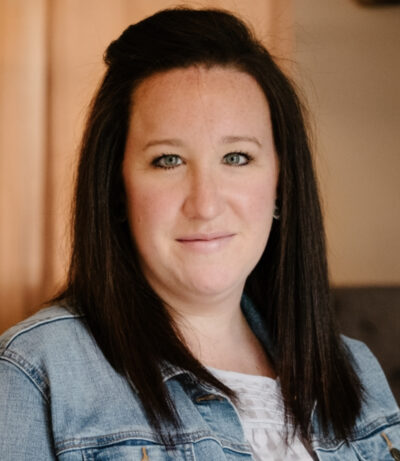 EZ: If you had to give advice to writers about craft, and the profession, what would it be? (Or what was the best advice for either you’ve received?)
EZ: If you had to give advice to writers about craft, and the profession, what would it be? (Or what was the best advice for either you’ve received?)
EG: I think that the best advice that I’ve received and that I would pass on (and it works every time), is to make sure you always have something you could be working on. There is so much waiting in the publishing industry! So much. It’s a constant game of “hurry up and wait,” and sometimes the waiting can be absolutely painful. What makes it go by more quickly is working on something new—focusing your energy on something that’s within your control.
EZ: Who are some of your favorite authors? Any favorite recent reads/books on your nightstand that you’re excited to get to?
EG: Such a good question! I love Leigh Bardugo, Elizabeth Acevedo, Jennieke Cohen, Jeff Zentner, Laura Taylor Namey, Jason Reynolds, Gita Trelease, Joy McCullough, (and let’s not forget Jane Austen!). The list goes on and on. This is not at all exhaustive! Currently on my nightstand, I’m reading Don’t Call the Wolf by Aleksandra Ross.
EZ: Where do you do most of your writing/what are the conditions that are most ideal for you? And if you could write anywhere, where would you go—and what would that day look like?
EG: My typical writing conditions are in my office with soft music playing, a lit candle, and my dog snoozing next to me. These are not my ideal writing conditions, though! Inevitably when I write from home, I find something to distract me from getting my words down. I really enjoy writing in libraries or coffee shops, or even writing at a friend’s house. Anywhere really, as long as the only thing I have to focus on is writing.
EZ: What’s next for you, and how can readers/educators learn more about your work?
EG: Words Composed of Sea and Sky hits shelves with Running Press Kids/Hachette on 5/25/21, and you can preorder using this link.
You can find more information about Erica, my books, and upcoming events on my website, www.ericageorgewrites.com
Erica George is a writer of young adult fiction. She is a graduate of The College of New Jersey with degrees in both English and education, and is currently an MFA student at Vermont College of Fine Arts. She resides in scenic northern New Jersey, but spends her summers soaking up the salty sea air on Cape Cod.
by Elisa Zied | Oct 18, 2020 | books, writer, writers, writing
“This collection of poems and photos beautifully illustrates the complex emotions of living in New York during a global pandemic.” ~ Kelly Ripa, Entrepreneur, Host, Actress and Producer
Living in New York City during a global pandemic has been some combination of surreal, dispiriting, challenging and inspirational. While many of us have yet to fully process and make sense of what has transpired on our usually vibrant streets and in our parks over these last several months—especially in its early epicenter days—several artists have continued to create.
Nicole Freezer Rubens, a native New Yorker, owner of a boutique design firm, and mother of three, is one such artist. Through her dual passions—poetry and photography—she has beautifully and poignantly chronicled her personal experience during the pandemic and shown its impact on our beloved city in her gorgeous debut, “The Long Pause and The Short Breath” (Three Tomatoes Publishing, 2020).
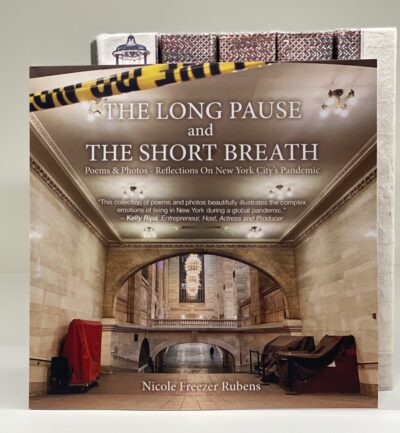 I had the pleasure of doing an Q & A with Nicole about her new book, one that gives readers a highly personal tour of the city during a moving and unforgettable time.
I had the pleasure of doing an Q & A with Nicole about her new book, one that gives readers a highly personal tour of the city during a moving and unforgettable time.
EZ: I’ve been enjoying your vibrant and gorgeous Instagram photos for years. What was it about the pandemic that made you take the plunge— not only to create a book of photos, but one that includes poetry too?
NFR: I have been writing poetry since I was 9 years old. Right after I read Shel Silverstein’s Where the Sidewalk Ends, I set out to create my first book of rhyming poems, bound in a denim blue loose leaf and including images and drawings. In college and after I studied poetry writing as well and throughout my life I have always written for myself. When the world shifted at the beginning of the global pandemic I was quite relieved that we were allowed to walk outside for exercise. Seeing our city empty out inspired me to write, often as I was walking in Central Park. With little else to do, I walked and explored a lot as a means to investigate and process what was happening. The poems began to accumulate after a few weeks. Not only did writing become therapeutic for me, but I began to feel a responsibility to myself to chronicle the events and repercussions of Covid-19 as a diaristic record for the future.
EZ: What was your process in taking and choosing photos specifically for the book, and how did you tackle the poetry (and do the photos pair with the poems or did you see them as separate if not related entities)?
NFR: I am generally a little obsessed with Instagram and love taking photos on my phone everywhere I go. Exploring new neighborhoods and photographing them is absolutely one of my favorite pastimes. When Covid prevented me from doing that, I began to take long walks to relatively local neighborhoods I had overlooked before. You ask an interesting question Elisa. The photos and poems were created as completely separate entities for me. Although they evolved simultaneously, I did not think to use them together until I realized that the poetry I had accumulated, was
becoming a body of work that could be a book. Once I finished writing I sat down to pair the poems with photos. This flowed naturally since they were captured to record the same subject matter of our city under lockdown.
EZ: So many writers and other artists have thrived during the pandemic, but many have also struggled (present company included). Did putting the book together help you cope and stay motivated during such tough times, or was it a struggle (or something in between)?
NFR: I have always had an easier time writing from the lows than from the highs. I have constantly used poetry writing as a coping mechanism. I realize as I write this, that that first binder of poems I wrote at nine, was written right after my parents got divorced. I am lucky because writing is a hobby, so I did not have the pressure to produce as so many artists do. I can say that on the days that I wrote a poem, I felt the satisfaction of productivity and that was personally rewarding and pushed me to continue to write. My interior design work was on hold for six months. My three grown children were home for three months, and cooking and cleaning occupied my days but did not satisfy me. I am very grateful that I was able to use some of my time on pause to create something long-lasting and that is important to me. It was not a struggle at all, it was more of a blessing for which I am grateful.
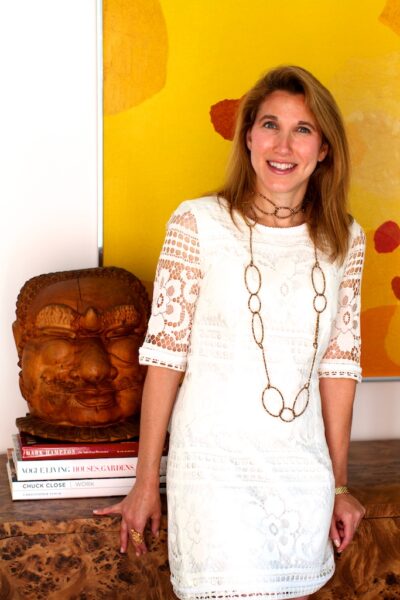 EZ: How would you sum up what you’ve experienced living in New York City during the pandemic, and what are some of the images or poems from the book that best encapsulate or capture the pandemic for you?
EZ: How would you sum up what you’ve experienced living in New York City during the pandemic, and what are some of the images or poems from the book that best encapsulate or capture the pandemic for you?
NFR: Overall, one of the most powerful aspects of being in NYC during the pandemic was bearing witness to the positive side of humanity. The Clap Because We Care round of cheering and applause that happened all over NYC at 7pm daily was always a bright spot in my day. Hearing, seeing and feeling the gratitude for and supporting the tireless healthcare workers and essential workers reminded me of the fundamental goodness in people and amplified my love for my city. Being able to scream for those two minutes, sandwiched between my family and neighborhood as we clapped, was a personal and helpful release. I also realized early on how fortunate I was in so many ways, including having bonus time together with my family. Although I felt frightened and deeply sad and frustrated, sharing that universal sense of loss with the world over made it easier to cope.
The cover image Off Limits of an empty Grand Central Station and You Are!! which shows a hand drawn heart-shaped message of strength taped to a lamppost truly define the times for me. Selecting a poem might be like picking a favorite child, but I can say that after I wrote March 30, 2020 about the field hospital being erected so unnaturally in Central Park, I felt I was on my way to having the writing soothe me.
EZ: What advice has helped you create in the face of a pandemic or grief or any kind or loss? (Or what advice would you offer to other artists?)
NFR: That is a very personal question, and each individual and creation is a unique situation which is what keeps artwork so interesting to me. I was always taught to write what you know, and the same applies to photography. I believe if one uses her voice, she will create from her truth and then it will certainly be meaningful and authentic.
The Long Pause and The Short Breath is available on Amazon or wherever books are sold. (If you don’t see it at your favorite independent bookstore or on their website, please request it.)
More about Nicole Freezer Rubens: She studied studio art, art history, creative writing and photography. Following a career in the art world, she launched NFR Consulting. Since childhood she’s written poetry and taken photos. Her favorite current pastime is exploring new neighborhoods and posting her treasured finds on Instagram. You can follow Nicole on Instagram at @nfrconsult.
by Elisa Zied | Sep 15, 2019 | books, fiction, writer, writers, writing, young adult books
Laura Taylor Namey is a woman on a mission. This dog loving, piano playing, former teacher is a mother of two and full time writer. She aspires to live in London someday, but right now is truly living the dream (and working her a** off) as the debut author of the brand new young adult novel, The Library of Lost Things (Inkyard Press, October 2019). Here’s a description of the novel from Goodreads:
From the moment she first learned to read, literary genius Darcy Wells has spent most of her time living in the worlds of her books. There, she can avoid the crushing reality of her mother’s hoarding and pretend her life is simply ordinary. But when a new property manager becomes more active in the upkeep of their apartment complex, the only home Darcy has ever known outside of her books suddenly hangs in the balance.
While Darcy is struggling to survive beneath the weight of her mother’s compulsive shopping, Asher Fleet, a former teen pilot with an unexpectedly shattered future, walks into the bookstore where she works…and straight into her heart. For the first time in her life, Darcy can’t seem to find the right words. Fairy tales are one thing, but real love makes her want to hide inside her carefully constructed ink-and-paper bomb shelter.
Still, after spending her whole life keeping people out, something about Asher makes Darcy want to open up. But securing her own happily-ever-after will mean she’ll need to stop hiding and start living her own truth—even if it’s messy.
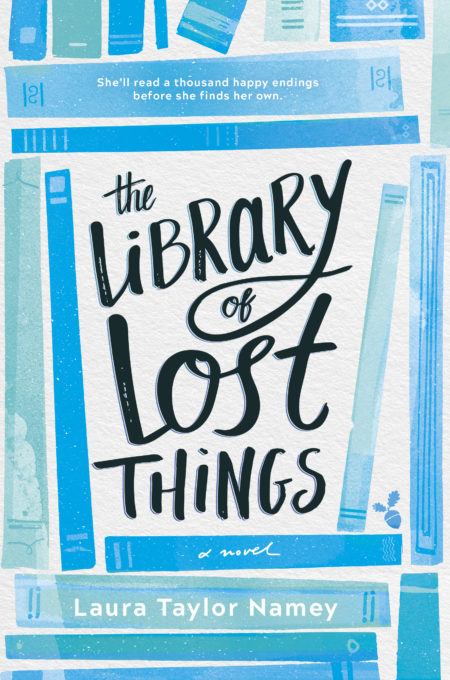 I had the pleasure of doing an email interview with my lovely friend whom I had the pleasure of meeting several years ago at a Society for Children’s Book Authors and Illustrators annual conference. Read on to learn about her writing journey and why she loves #pitchwars and her critique partners (not necessarily in that order).
I had the pleasure of doing an email interview with my lovely friend whom I had the pleasure of meeting several years ago at a Society for Children’s Book Authors and Illustrators annual conference. Read on to learn about her writing journey and why she loves #pitchwars and her critique partners (not necessarily in that order).
EZ: At what point in your life did you know you wanted to write for children and young adults? And when did you know you were a writer?
LTN: I have always felt like a natural writer, even if I didn’t have the logistics figured out until a few years ago. I am a former teacher, and I found myself using a lot of literature in my classroom lessons. I began to long for the chance to write my own stories. About five years ago, I started writing a young adult novel (this one will forever live in a drawer). I’d had no formal training, but I used that work to find out what I really did need to work on more. I got help, read a ton, and decided that I wanted to focus on the young adult age group. I love the emphasis on coming-of-age themes, high-concept storytelling, and exploring complex and relevant topics.
EZ: What has been the best part of transitioning from a pre-published to a published author?
LTN: I have such admiration and respect for career authors, and creators who consistently come up with beautiful and compelling content. Being able to take my small place beside them, with the word Published next to my name, is an incredible experience.
EZ: How do you fit writing into the rest of your life (and fit the rest of your life into your writing)?
LTN: I am blessed to have a supportive family, and the opportunity to write full time right now. I work best in the morning, so having a new teen driver in my home has helped to free up some of my time to build up my word count before lunch time. I take breaks to take care of my home and family, and to squeeze in a workout. Admittedly, I don’t watch a lot of TV. I am usually writing, or reading during down time.
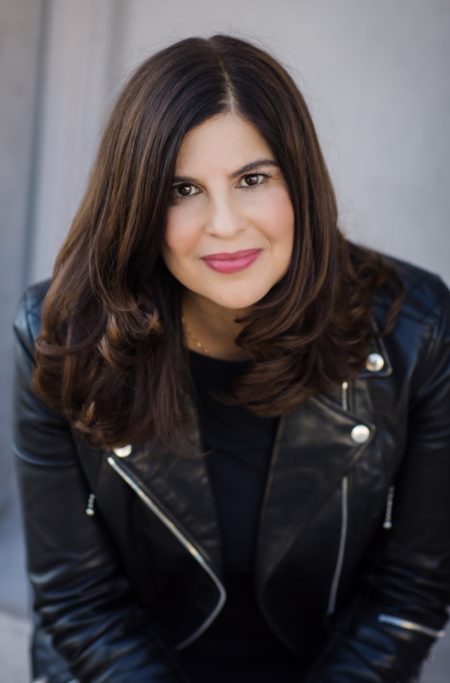 EZ: What are your favorite kinds of books to read, and how do they inspire your writing?
EZ: What are your favorite kinds of books to read, and how do they inspire your writing?
LTN: I love books that stick with me long after I’ve finished them. I enjoy a wide variety of authors, age groups, and genres. Make me care, feel, and want to chat about your book all day and that’s my idea of a winner. I believe all writers need to actively read other writers. I am most inspired by other authors in the areas of scope and opportunity. There are so many ways to attack and deconstruct even the same topic in drastically different ways with differing points of view. Reading more only confirms my belief that so many possibilities lay in front of our pens.
EZ: Can you describe your experience with #pitchwars on Twitter?
LTN: I was a 2017 #pitchwars unofficial mentee. Besides working with a fantastic mentor who became the first person to work on THE LIBRARY OF LOST THINGS, #pitchwars brought me into a supportive community of writers. This is the real prize in any online contest. Put your work out there. Meet fellow writers. Team up and share and hone your craft together, and know that you are not alone in your struggles and hopes.
EZ: You are a big fan of your critique partners. How did you meet them, and what makes your partnership work? What advice do you have for other writers who want to work with critique partners or groups?
LTN: I have two fantastic critique partners that work with me almost every day. We met because we were all 2017 #pitchwars unofficial mentees. We began chatting privately on Twitter DM, and became lifelong friends through sharing our work and supporting one another. What sets our group apart is that we don’t wait until we finish a novel to edit or weigh in. We are always working together on our three individual manuscripts. We plan together from idea-up, talk through issues, name towns or characters, and share snippets of our writing as we go. When I get stuck, I can ask a question directly from the point of concern. My partners already have such a deep knowledge of my manuscript, plot and theme, and character arcs, that they can weigh in quickly. And I do the same for their work.
For those who would like to join or form a group like this, hang out on private writer’s boards or the community groups associated with social media programs, such as #pitchwars. Put yourself out there. It might take some time, but you will find your people. It’s okay if you try out a CP and that person isn’t quite right for you. Keep sharing and investing in others.
How will you know if you are collaborating with the best people for you? Your perfect CPs will be similar enough to you and your work that they share a taste level and basic skill level. But they should be different enough that they can expand your scope and contribute to your growth. A good CP walks beside you, while also possessing the tools to push you. My CPs and I are the best of friends, but when it’s time to work, we give tough feedback with love.
EZ: What are you currently working on? And where do you see yourself in five years?
LTN: Right now I am almost finished with the draft of a secret junior novel. I’m hanging out in the young adult contemporary world for a while, and hope to have a few books side-by-side on shelves in five years.
To learn more about Laura Taylor Namey and The Library of Lost Things, visit her website. You can also find her on Twitter and on Instagram. Stay tuned for Namey’s sophomore novel, A Cuban Girl’s Guide to Sweaters and Stars (Simon & Schuster, Fall ’20) and future titles as well!
 Described by Kirkus as “[A] contemporary feminist debut. . . . A timely and absorbing character study of a sexual assault survivor,” and by Corey Ann Haydu, author of Ever Cursed, as “Vibrant, daring, and deep, Dangerous Play is both a thrilling ride and a profound exploration of female friendship, rape culture, and the difficulty of doing the right thing in a world built on wrongs. An unflinching and empowering debut,” the novel is a timely, gripping and thought-provoking must-read for teens.
Described by Kirkus as “[A] contemporary feminist debut. . . . A timely and absorbing character study of a sexual assault survivor,” and by Corey Ann Haydu, author of Ever Cursed, as “Vibrant, daring, and deep, Dangerous Play is both a thrilling ride and a profound exploration of female friendship, rape culture, and the difficulty of doing the right thing in a world built on wrongs. An unflinching and empowering debut,” the novel is a timely, gripping and thought-provoking must-read for teens.
 What was the spark that led to Dangerous Play, why was it important for you to write this particular story, and what did the process from spark to book look like?
What was the spark that led to Dangerous Play, why was it important for you to write this particular story, and what did the process from spark to book look like?

 What’s the best thing about transitioning from writer to debut author?
What’s the best thing about transitioning from writer to debut author?



 EZ: Was there a moment in time you discovered you were a writer, or was it something you’ve always done without thinking much about it?
EZ: Was there a moment in time you discovered you were a writer, or was it something you’ve always done without thinking much about it? EZ: If you had to give advice to writers about craft, and the profession, what would it be? (Or what was the best advice for either you’ve received?)
EZ: If you had to give advice to writers about craft, and the profession, what would it be? (Or what was the best advice for either you’ve received?) I had the pleasure of doing an Q & A with Nicole about her new book, one that gives readers a highly personal tour of the city during a moving and unforgettable time.
I had the pleasure of doing an Q & A with Nicole about her new book, one that gives readers a highly personal tour of the city during a moving and unforgettable time. EZ: How would you sum up what you’ve experienced living in New York City during the pandemic, and what are some of the images or poems from the book that best encapsulate or capture the pandemic for you?
EZ: How would you sum up what you’ve experienced living in New York City during the pandemic, and what are some of the images or poems from the book that best encapsulate or capture the pandemic for you? I had the pleasure of doing an email interview with my lovely friend whom I had the pleasure of meeting several years ago at a
I had the pleasure of doing an email interview with my lovely friend whom I had the pleasure of meeting several years ago at a  EZ: What are your favorite kinds of books to read, and how do they inspire your writing?
EZ: What are your favorite kinds of books to read, and how do they inspire your writing?
Recent Comments